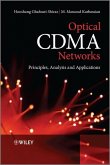Offers clear definitions and an exhaustive review of terms, ideas, and practices currently in use in the field of network science Provides a broad survey of the historical evolution of network science, from its roots in mathematical graph theory to the current state of research, development, and application to existing real world infrastructures.
A comprehensive look at the emerging science of networks
Network science helps you design faster, more resilient communication networks; revise infrastructure systems such as electrical power grids, telecommunications networks, and airline routes; model market dynamics; understand synchronization in biological systems; and analyze social interactions among people.
This is the first book to take a comprehensive look at this emerging science. It examines the various kinds of networks (regular, random, small-world, influence, scale-free, and social) and applies network processes and behaviors to emergence, epidemics, synchrony, and risk. The book's uniqueness lies in its integration of concepts across computer science, biology, physics, social network analysis, economics, and marketing.
The book is divided into easy-to-understand topical chapters and the presentation is augmented with clear illustrations, problems and answers, examples, applications, tutorials, and a discussion of related Java software. Chapters cover:
Origins
Graphs
Regular Networks
Random Networks
Small-World Networks
Scale-Free Networks
Emergence
Epidemics
Synchrony
Influence Networks
Vulnerability
Net Gain
Biology
This book offers a new understanding and interpretation of the field of network science. It is an indispensable resource for researchers, professionals, and technicians in engineering, computing, and biology. It also serves as a valuable textbook for advanced undergraduate and graduate courses in related fields of study.
A comprehensive look at the emerging science of networks
Network science helps you design faster, more resilient communication networks; revise infrastructure systems such as electrical power grids, telecommunications networks, and airline routes; model market dynamics; understand synchronization in biological systems; and analyze social interactions among people.
This is the first book to take a comprehensive look at this emerging science. It examines the various kinds of networks (regular, random, small-world, influence, scale-free, and social) and applies network processes and behaviors to emergence, epidemics, synchrony, and risk. The book's uniqueness lies in its integration of concepts across computer science, biology, physics, social network analysis, economics, and marketing.
The book is divided into easy-to-understand topical chapters and the presentation is augmented with clear illustrations, problems and answers, examples, applications, tutorials, and a discussion of related Java software. Chapters cover:
Origins
Graphs
Regular Networks
Random Networks
Small-World Networks
Scale-Free Networks
Emergence
Epidemics
Synchrony
Influence Networks
Vulnerability
Net Gain
Biology
This book offers a new understanding and interpretation of the field of network science. It is an indispensable resource for researchers, professionals, and technicians in engineering, computing, and biology. It also serves as a valuable textbook for advanced undergraduate and graduate courses in related fields of study.








